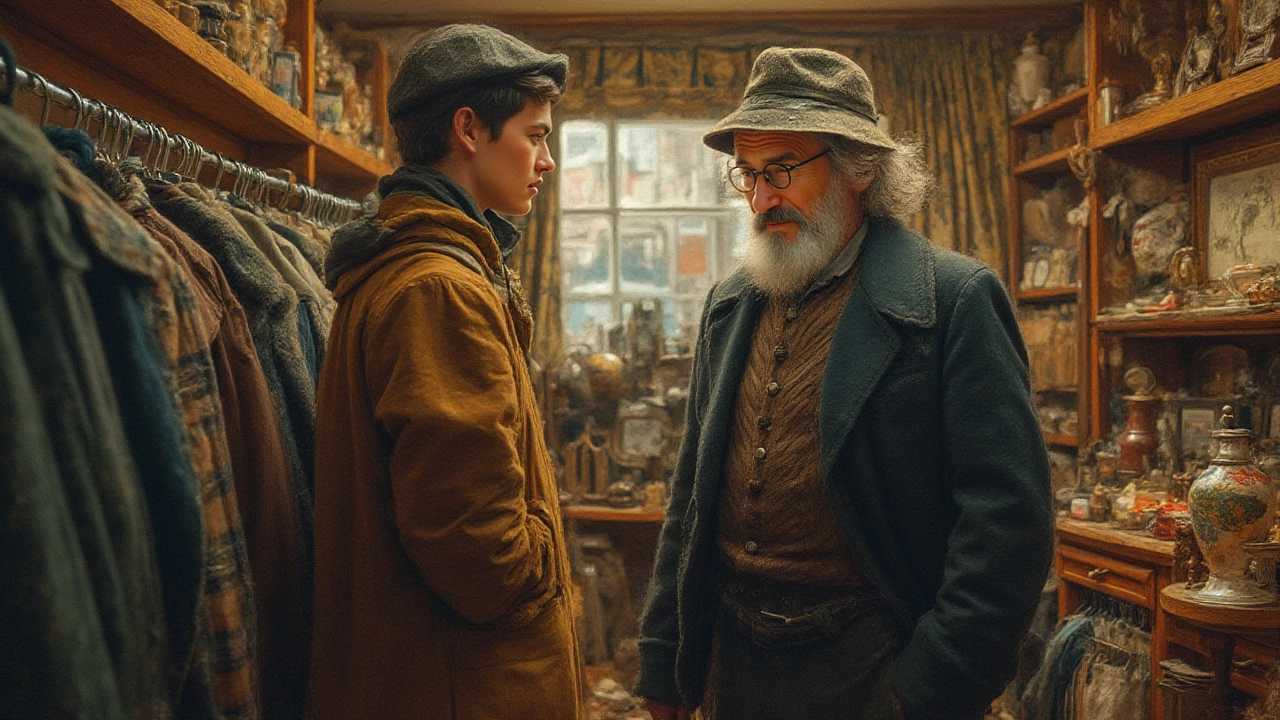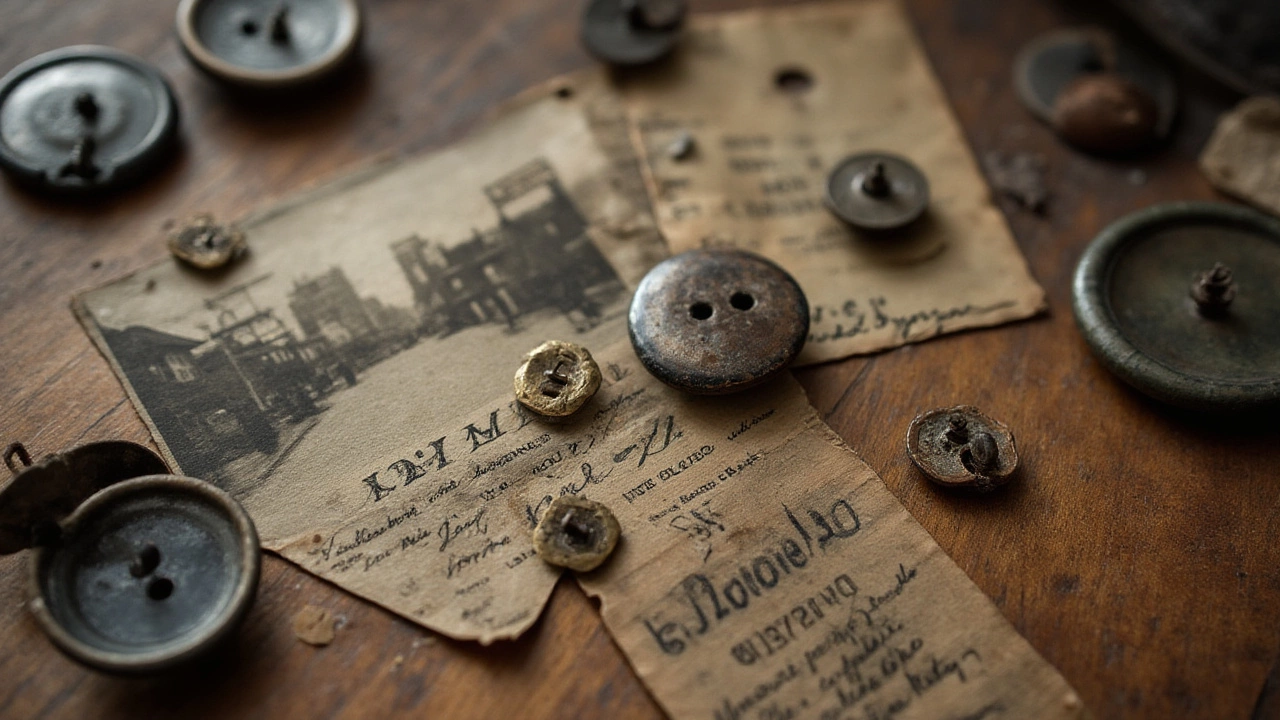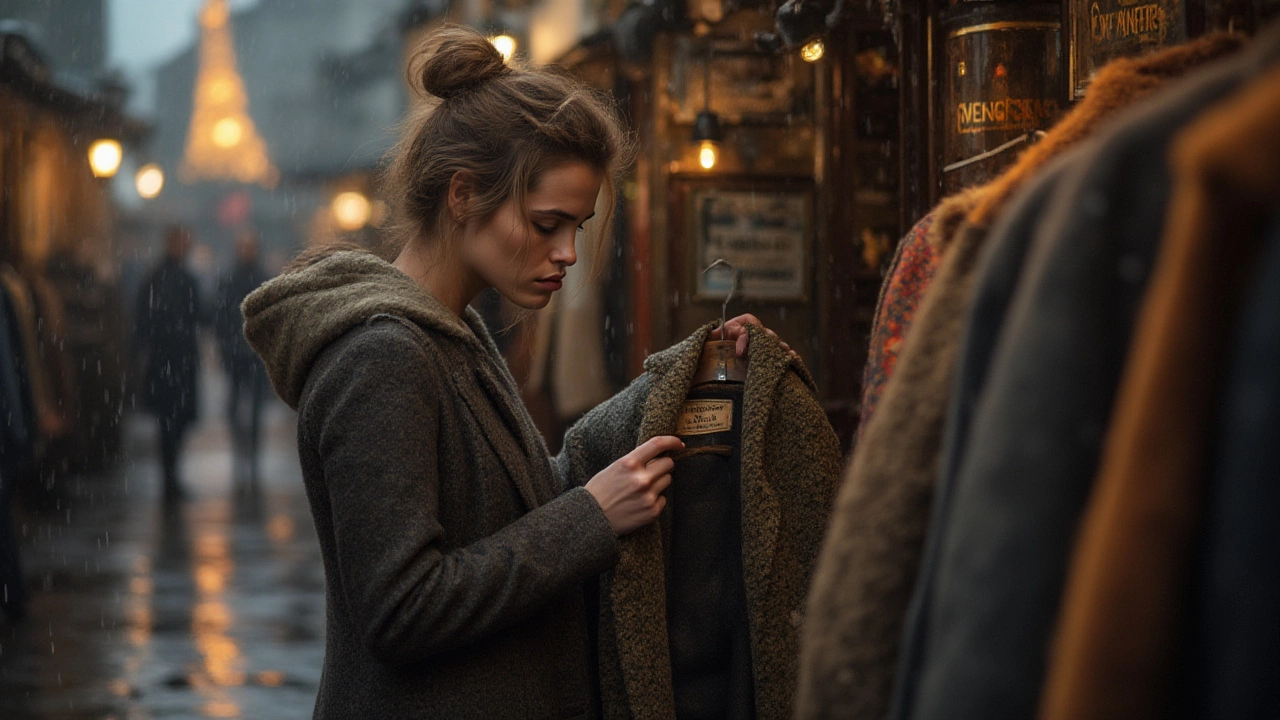Ever wandered through a musty-smelling row at Oxfam in Galway or trawled through the racks at Dublin’s Nine Crows, only to stumble on a vintage jacket that just feels like it has lived a much bigger life than you? The curiosity bubbles up—you want to know its story, and, most of all, its real age. Figuring this out isn’t just guesswork or relying on a hunch. In Ireland, with its rich fabric history and close-knit communities around vintage culture, there are actually some pretty solid signs to help you unlock a jacket’s origin and era.
Irish Vintage Jackets: The Secret Language of Labels, Features, and Fabrics
The quickest way to start identifying the age of a vintage jacket in Ireland is to go straight for the label. Irish vintage markets, whether you’re browsing at Blackrock Market or scrolling through siopavintage.ie, are filled with coats and bombers from every decade. Labels tell you a lot—they might mention ‘Made in Ireland’, which nearly always means quality. But it’s not just about where; it’s about what’s written, how it’s printed, and even the very feeling of the label itself.
For instance, older Irish jackets—think late ’50s to early ’70s—often have woven or embroidered tags, not printed. The font might feel blockier or almost hand-done. Look for local brand names too: Magee, for Donegal tweed, or Aran Crafts for their iconic wool pieces. And don’t forget those mid-century chain department stores—Clerys, Switzers, Guiney’s—whose in-house garments sometimes show up in the wild.
Sometimes, you’ll get a surprise—like a tag in Irish (Gaeilge) on a tweed sports coat from the ’60s. These are gold. In the ’80s and ’90s, labels start to get shinier, maybe plasticky. If it’s a jacket you picked up from a popular Cork charity shop like Enable Ireland, check subtle details: older size codes (like 10, 12, 14—but with a completely different fit than modern sizing), or written care instructions ("Dry clean only, do not machine wash" often written in stiffer, all-caps print).
And the fabric? Pure wool from Kerry or Mayo, thickly woven, can scream mid-century. Synthetics—nylon, polyester—start to creep in hard by the ’70s, especially in Irish sports shops (Carroll’s in Dublin, for example) and school jackets. Flip the jacket inside out, and study the lining: older linings will often be a sturdy satin or even a rougher cotton, not the shiny, mass-produced feel of newer coats. Sometimes a bit of horsehair canvas at the jacket’s chest means you’re looking at something pre-1970s.

The Irish Thrifting Experience: Unique Local Clues and Practical Age-Spotting Tips
Digging deep into charity racks on the north side of Limerick or exploring the gigs at the Dublin Flea Market, you’ll notice some Irish quirks. One: Ireland’s climate has shaped the outer layers folks buy. Hard-wearing raincoats with thick, rubbery linings often have well-worn stamps inside (usually batches from ‘Irish Rail’ or the old CIE). Pea coats from the 1940s that’ve been passed down by granddads in Cavan households still surface here and there, with brass buttons and naval-inspired embroidery. Spot a name or service number inside? That’s authentic World War II-era kit.
A lot of jackets in Ireland carry family history—and these heirlooms often ended up on charity shop rails or at car boot sales, waiting for you. The stitching is vital: hand-finished touches, not quite perfect, reveal a pre-1975 origin. Machine-perfect seams? Likely newer. Check the buttonholes; hand-stitched ones (slightly uneven, sometimes a bit frayed) show age. Leather jackets from the ’60s and ’70s—favourites in bohemian West Cork and still worn around arts festivals—will often have thick, almost woody-smelling untreated hide. Modern leathers are smooth, lighter, and often mass-dyed for uniformity.
Sizing can mess with your head. That chunky men’s jacket marked as size 38 from an old TK Maxx clearance in Waterford probably fits smaller than a modern 38. In Ireland, the shift to European sizing didn’t really start showing up till the ’90s—older coats used imperial numbers or sometimes just ‘Small’, ‘Medium’, ‘Large’ (which might have meant something else entirely back in 1973). Sometimes, dry cleaning tickets, with Irish addresses on faded paper tucked in a hidden pocket, offer the best time capsule you’ll find.
If you’re ever stuck, ask the seller. Vintage traders in Ireland love sharing lore—try chatting with traders at the Jam Park Vintage Kilo Sale in Swords or the Stables Market in Limerick. Regulars know their shoulder pads (hello ‘80s power-dressing), collar styles (those rounded Peter Pan collars cropped up constantly in the ’60s Irish Catholic school uniforms), and can spot a fake 1970s bomber from a mile away. If there’s no expert nearby, whip out your phone: Google Lens sometimes helps, but trust your fingers and your memory for that unmistakable old-fabric feel.
Here's a quick table to compare jacket features from different eras often seen across Irish shops:
| Decade | Fabric/Lining | Label/Brand Style | Notable Features |
|---|---|---|---|
| 1950s–1960s | Thick tweed, pure wool, cotton or horsehair lining | Woven/embroidered; Irish brands like Magee | Hand-stitched buttonholes, chunky buttons, minimal logo |
| 1970s | Blended wool, early polyesters, stiffer lining | Blocky fonts, size written on paper tag | Wide lapels, colourful linings, bigger collars |
| 1980s–1990s | Nylon, acrylic blends, shiny polyester lining | Bolder, printed labels; Euro sizing appears | Shoulder pads, branded zippers, plastic buttons |
| 2000s | Soft blends, obvious synthetics, thin linings | Modern branding, barcodes | Slim fits, mass-produced look, lightweight feel |

From Flea Markets to Family Heirlooms: The Social Story of Irish Vintage Jackets
It’s not just what your vintage jacket looks like—it’s where you find it, and the sheer nostalgia built into every seam. In Ireland, vintage isn’t a fad; it’s a proper community, with storytelling woven through. Check the walls at shops like Tola Vintage (off Great Strand Street, Dublin), full of Polaroids and handwritten style notes, where staff can point out how late ’60s Irish biker jackets made their comeback during the indie gig scene of the early 2000s.
Sometimes, the jacket’s style is a time capsule of Irish life. Think deep, dark brown leathers that made the rounds at the Lisdoonvarna Matchmaking Festival, or the pop-bright windbreakers seen at old GAA matches in Killarney. Certain trim and hardware—brass buckles, snap fasteners, chunky zippers stamped YKK or RIRI—serve as a signature. Pre-1980s, the hardware was heavier, not as polished. The swoosh of a real waxed cotton Barbour (a farmhouse staple near the Mourne Mountains) signals a 1970s or ‘80s original if it’s still got that weed-and-wool smell.
Pay close attention to the story your jacket tells. Did you find a Claddagh coin sewn into the pocket lining? That’s a County Galway tradition, believed to bring luck to its wearer. If you picked up a Donegal tweed peacoat with a faded church raffle ticket in the lining, you’re holding a literal piece of rural Irish history. Sometimes, these clues give you a decade or even a year for your jacket, when tags or styles won’t.
Sometimes, old family jackets are returned to local shops—especially after funerals, when relatives clear out houses in rural Clare or Tipperary. That’s why real treasures occasionally land in the rails at Vincent’s or Age Action in smaller Irish towns. Stitching in names with red thread, handwritten date tags from Irish boarding schools, or a captain’s badge from a decades-old hurling tournament—these details pop up during your hunt. Ask around: the more you get to know about where and why a certain jacket shows up at a local shop, the better you’ll get at reading a jacket’s secret life.
The thrill of the Irish vintage hunt goes hand in hand with community. You might walk into the Dandelion Market (yes, the weekly vintage pop-up on Francis Street) and spot the same old faces—traders with sharp eyes who know the difference between a 1993 and a 1983 Adidas windbreaker because they wore both to school. Everyone shares—stories, tips, and sometimes a sneaky discount—because the love of uncovering decades-old history in a single Irish jacket is what keeps this wild, local obsession alive.
